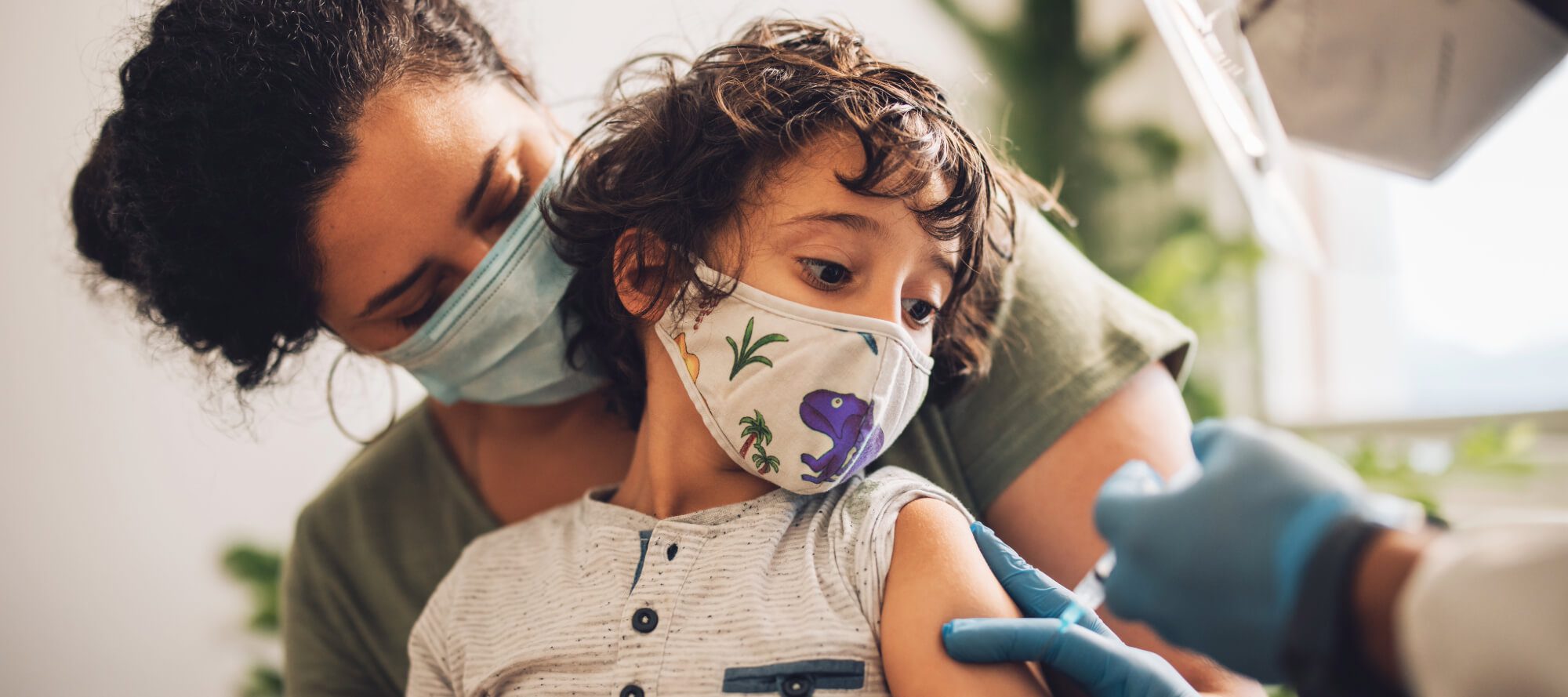- Vaccine Effectiveness Against Long COVID in Children
These are the results of a retrospective cohort study that used data from 17 health systems in the RECOVER PCORnet electronic health record program for visits after vaccine availability. They examined both probable (symptom-based) and diagnosed Long COVID after vaccination. The case definition for diagnosed Long COVID was two or more visits with diagnosis codes specific for long COVID; a single diagnosis code fell within the case definition for probable Long COVID. In addition, to account for incomplete availability or use of Long-COVID-specific diagnosis codes, especially for patients with early signs of Long COVID, the case definition for probable Long COVID included COVID-19 (SARS-CoV-2 polymerase chain reaction or antigen positive or COVID-19-specific diagnosis codes) plus at least two Long-COVID-compatible diagnoses 28 to 179 days after infection. The vaccination rate was 67% in the cohort of 1,037, 936 children. The incidence of probable Long COVID was 4.5% among patients with COVID-19, whereas diagnosed Long COVID was 0.8%. Adjusted vaccine effectiveness within 12 months was 35.4% (95 CI 24.5–44.7) against probable Long COVID and 41.7% (15.0–60.0) against diagnosed Long COVID. VE was higher for adolescents (50.3% [36.6–61.0]) than children aged 5 to 11 (23.8% [4.9–39.0]). VE was higher at six months (61.4% [51.0–69.6]) but decreased to 10.6% (−26.8% to 37.0%) at 18-months. The authors conclude that “This large retrospective study shows moderate protective effect of severe acute respiratory coronavirus 2 vaccination against Long COVID. The effect is stronger in adolescents, who have higher risk of Long COVID, and wanes over time.”
- Impact of Vaccination on the Association of COVID-19 with Cardiovascular Diseases: An OpenSAFELY Cohort Study
Infection with SARS-CoV-2 is associated with an increased risk of arterial and venous thrombotic events, so here investigators looked at whether vaccination was associated with a reduction in this risk. Using linked electronic health records for ~40% of the English population, they compared a ‘pre-vaccination’ cohort (18,210,937 people) in the wild-type/Alpha variant eras (January 2020-June 2021), and ‘vaccinated’ and ‘unvaccinated’ cohorts (13,572,399 and 3,161,485 people respectively) in the Delta variant era (June-December 2021). They found that the incidence of each arterial thrombotic, venous thrombotic and other cardiovascular outcomes was substantially elevated during weeks 1-4 after COVID-19, compared with before or without COVID-19. Hazard ratios were higher after hospitalized than non-hospitalized COVID-19 and higher in the pre-vaccination and unvaccinated cohorts than the vaccinated cohort. The incidence of arterial thrombotic events (ATE), such as myocardial infarction (MI) and ischaemic stroke (ATE) during weeks 1-4 after COVID-19 diagnosis, compared with before or without COVID-19 diagnosis, was elevated in the pre-vaccination aHRs (4.40) and unvaccinated cohorts aHRs (8.53) respectively) but less markedly elevated in the vaccinated cohort 2.09. The aHRs for venous thrombotic events (VTE), such as pulmonary embolism (PE) and lower limb deep vein thrombosis (DVT) during weeks 1-4 after COVID-19 diagnosis, versus before or without COVID-19 diagnosis, were substantially higher with pre-vaccination (aHRs 16.6) and unvaccinated cohorts 29.6, but less markedly in the vaccinated cohort (4.87 (4.53–5.23)
- The Impacts of Nirmatrelvir–Ritonavir on Myocardial Injury and Long-Term Cardiovascular Outcomes in Hospitalized Patients with COVID-19 amid the Omicron Wave of the Pandemic
These are the results of a prospective cohort study that identified hospitalized adult patients with COVID-19 between April 19, 2022, and June 9, 2022, amid the Omicron wave of the pandemic. Matched nirmatrelvir–ritonavir-treated and non-treated cohorts were formed using the propensity score matching method. The primary outcome of this study was the incidence of major adverse cardiovascular events MACEs (cardiovascular death, myocardial infarction, stroke, new-onset heart failure or heart failure hospitalization or ventricular arrhythmia) from 30 days to 16 months after the diagnosis of COVID-19. Two 949-patient cohorts with balanced baseline characteristics were formed by propensity score matching. During the follow-up period, 59 patients in the nirmatrelvir–ritonavir group and 86 patients in the control group developed major adverse cardiovascular events MACEs (P = 0.020). The differences were mainly reflected in new-onset heart failure or heart failure hospitalization. Nirmatrelvir–ritonavir (Paxlovid)was the independent protective factor for the occurrence of MACEs in this population.
Situation Dashboards

World Health Organization (WHO)
Novel Coronavirus (COVID-19) Situation from World Health Organization (WHO)

Johns Hopkins University (JHU)
Coronavirus COVID-19 Global Cases by the Center for Systems Science and Engineering (CSSE) at JHU

COVID-19 in US and Canada
1Point3Acres Real-Time Coronavirus (COVID-19) Updates in US and Canada with Credible Sources

Genomic Epidemiology COVID-19
Genomic Epidemiology of (COVID-19) Maintained by the Nextstrain team, enabled by data from GISAID.






